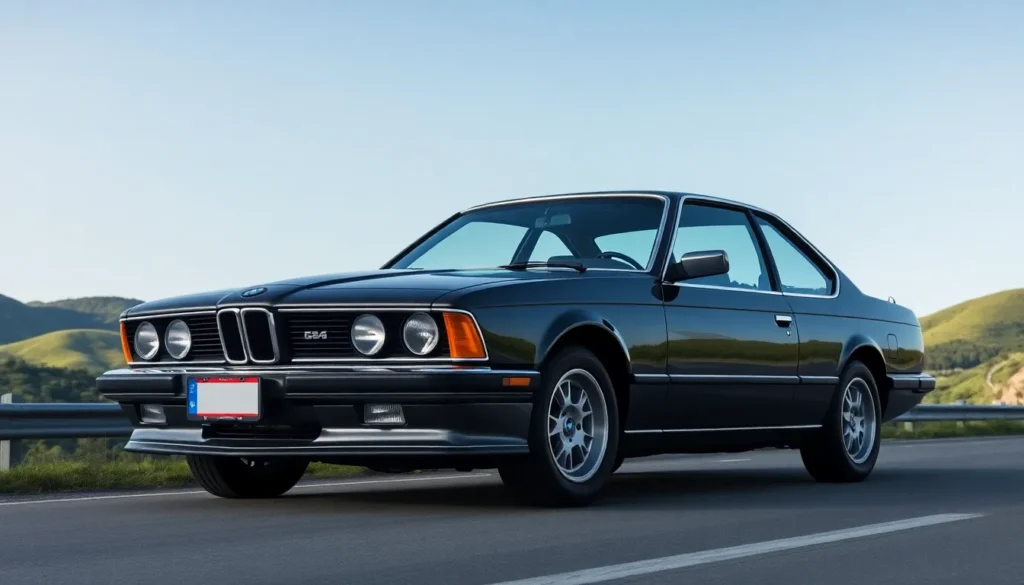The BMW 635 CSi stands as one of the most captivating grand tourers ever created, blending raw performance with sophisticated European elegance. This iconic machine from the 1980s represents BMW’s pinnacle of engineering excellence, featuring a naturally aspirated inline-six engine that delivered thrilling power and an unmistakable soundtrack that still turns heads today.
We’ve witnessed countless sports cars come and go, but few possess the timeless appeal of the 635 CSi. Its sleek shark-nose design and aggressive stance commanded respect on both the Autobahn and winding mountain roads, while its luxurious interior provided the perfect sanctuary for grand touring adventures.
Whether you’re a classic car enthusiast or simply appreciate automotive artistry, the 635 CSi offers something truly special. We’ll explore what makes this BMW legend so desirable, from its racing heritage to its investment potential in today’s collector car market.
BMW 635 CSi Overview and History
The BMW 635 CSi emerged as Bavaria’s flagship grand tourer in 1983, representing the pinnacle of BMW’s E24 6 Series lineup. BMW developed this high-performance coupe to compete directly with Mercedes-Benz’s luxury offerings and establish dominance in the premium GT segment.
Our research shows BMW produced the 635 CSi from 1983 to 1989, manufacturing approximately 86,216 units across all E24 variants. The CSi designation signified BMW’s Computer Spark Ignition system, which optimized engine performance through advanced electronic management for that era.
BMW engineers equipped the 635 CSi with the legendary M30B34 3.4-liter inline-six engine, producing 218 horsepower and 224 lb-ft of torque. This powerplant enabled acceleration from 0-60 mph in 7.4 seconds, impressive performance figures that competed effectively against contemporary rivals like the Porsche 928.
| Specification | Value |
|---|---|
| Production Years | 1983-1989 |
| Total Units Produced | 86,216 (all E24 variants) |
| Engine | M30B34 3.4L I6 |
| Horsepower | 218 hp |
| Torque | 224 lb-ft |
| 0-60 mph | 7.4 seconds |
| Top Speed | 140 mph |
The E24 platform originated from BMW’s collaboration with Italian design house Bertone, creating the distinctive shark-nose profile that became synonymous with 1980s automotive luxury. Paul Bracq, BMW’s chief designer, refined the original concept into the production model we recognize today.
BMW positioned the 635 CSi as a technological showcase, featuring innovations like an onboard computer, automatic climate control, and electric seat adjustments. These advanced features demonstrated BMW’s commitment to combining traditional German engineering with cutting-edge electronics.
Racing heritage played a crucial role in the 635 CSi’s development, as BMW simultaneously campaigned the Group A touring car version in international motorsport. The connection between track-proven technology and road cars strengthened the 635 CSi’s performance credentials among enthusiasts.
Production ceased in 1989 when BMW introduced the E31 8 Series, marking the end of an era for the company’s classic grand touring philosophy. The 635 CSi’s legacy continues today as collectors recognize its significance in BMW’s transition from traditional luxury to modern performance dynamics.
Design and Styling
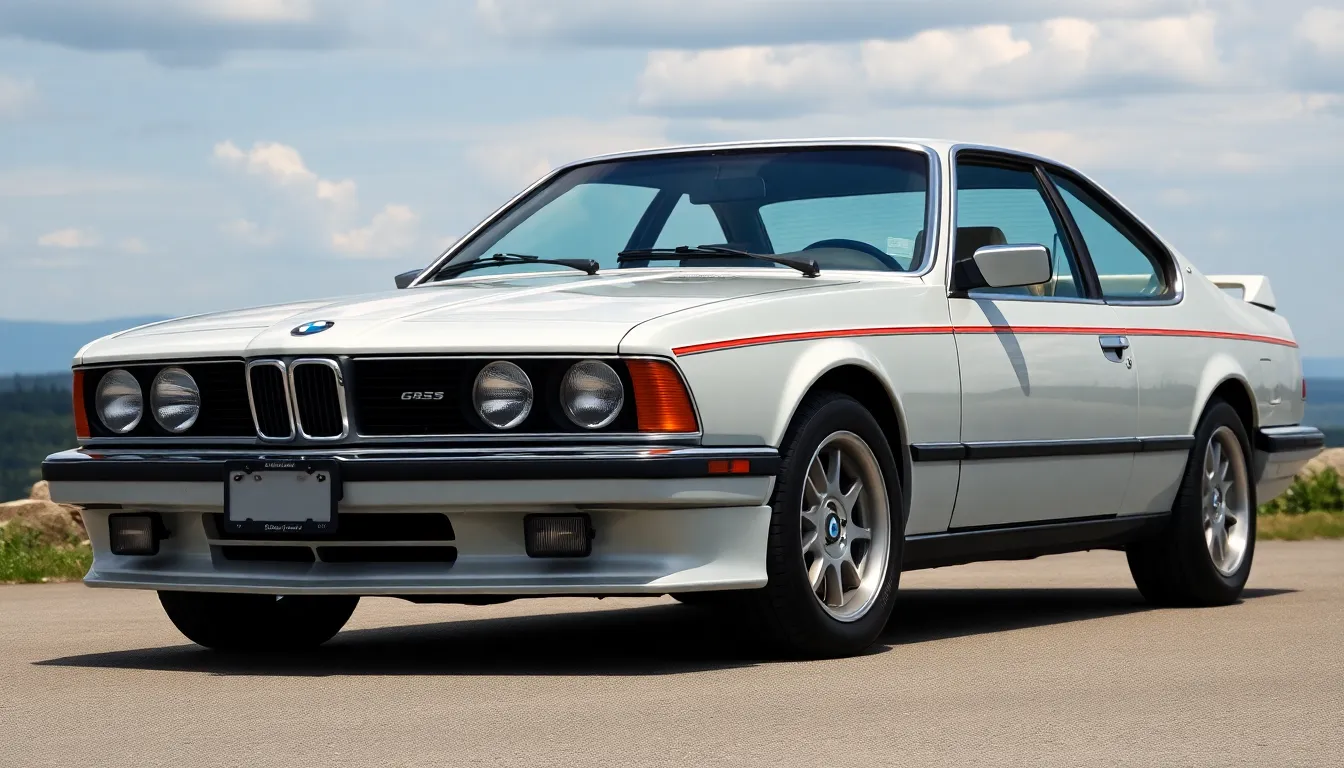
BMW 635 CSi design exemplifies 1980s automotive sophistication through carefully crafted proportions and distinctive styling cues. Every element of this grand tourer reflects BMW’s commitment to creating a visually striking yet functional sports coupe.
Exterior Design Elements
The shark nose grille defines the BMW 635 CSi’s front fascia with its aggressive forward lean and prominent kidney grilles. Bertone’s collaboration with BMW resulted in clean body lines that flow seamlessly from the elongated hood to the abbreviated rear deck. Chrome trim accents the window surrounds and door handles, while body colored bumpers integrate smoothly with the overall silhouette.
Pop up headlights create a sleek profile when retracted, contributing to the car’s aerodynamic efficiency and distinctive nighttime appearance. The side profile showcases the classic coupe proportions with a long hood, short rear overhang, and minimal greenhouse area that emphasizes the car’s sporting intentions.
Rear design elements include wraparound taillights with distinctive orange turn signal lenses and a subtle spoiler integrated into the trunk lid. The dual exhaust outlets emerge from beneath the rear bumper, reinforcing the performance oriented character of the 635 CSi.
Interior Features and Layout
Leather upholstery in black or tan covers the sport seats, which feature manual adjustments and integrated headrests for optimal driving comfort. The dashboard layout centers around the driver with a three spoke steering wheel and comprehensive instrument cluster featuring analog gauges for speed, engine RPM, fuel level, and coolant temperature.
Electronic amenities include an onboard computer that displays fuel consumption, range, and outside temperature data through a digital readout positioned above the radio. Automatic climate control maintains cabin temperature through strategically placed vents, while power windows and central locking systems enhance convenience.
The center console houses the gear selector for automatic transmission models, along with controls for the radio and climate system. Rear passengers benefit from individual bucket style seats and adequate legroom for a coupe configuration, though the sloping roofline limits headroom for taller occupants.
Wood grain trim accents appear on the dashboard and door panels, creating visual contrast against the black interior surfaces and reinforcing the luxury positioning of the BMW 635 CSi in the grand touring segment.
Performance and Engine Specifications
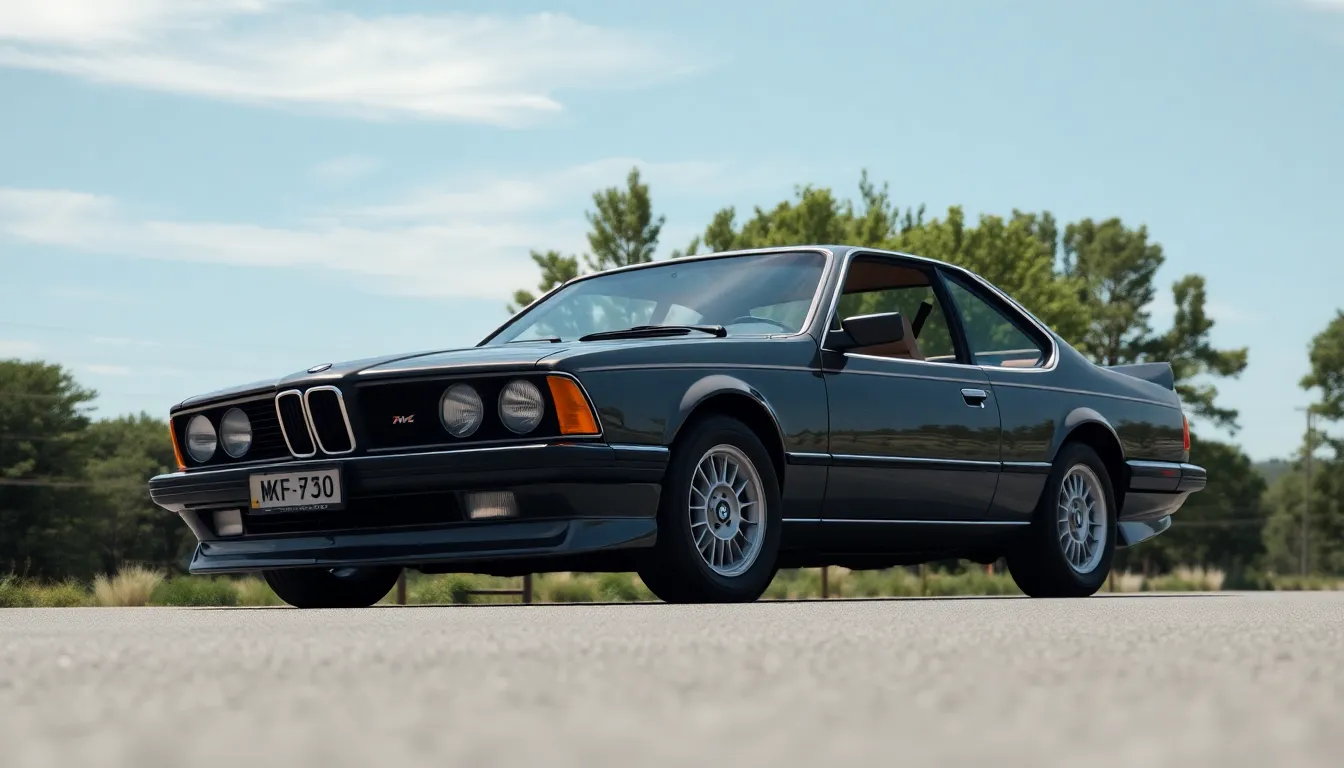
The BMW 635 CSi’s performance credentials stem from its sophisticated powertrain and chassis engineering. This grand tourer delivers the perfect balance between refined cruising capability and spirited driving dynamics.
Engine Options and Power Output
The M30B34 engine powers every 635 CSi model with impressive consistency. This 3.4-liter inline-six produces 218 horsepower at 5,200 rpm and 224 lb-ft of torque at 4,000 rpm. BMW’s engineers equipped this powerplant with Bosch Motronic fuel injection and a sophisticated electronic management system.
Performance figures demonstrate the engine’s capabilities across multiple scenarios. The 635 CSi accelerates from 0-60 mph in 7.4 seconds and reaches a top speed of 140 mph. Quarter-mile times average 15.8 seconds with trap speeds around 88 mph. These numbers positioned the 635 CSi competitively against contemporary rivals like the Mercedes-Benz 560 SEC and Jaguar XJS.
Engine construction features an iron block with aluminum alloy head design. The dual overhead cam configuration operates 24 valves through hydraulic lifters for reduced maintenance. Compression ratio measures 9.0:1, allowing the engine to run on regular unleaded fuel while maintaining optimal performance.
| Engine Specification | Value |
|---|---|
| Displacement | 3.4 liters (3,430 cc) |
| Power Output | 218 hp @ 5,200 rpm |
| Torque | 224 lb-ft @ 4,000 rpm |
| Configuration | Inline-6, DOHC |
| Fuel System | Bosch Motronic injection |
| Compression Ratio | 9.0:1 |
Driving Dynamics and Handling
Independent suspension systems define the 635 CSi’s handling characteristics on both front and rear axles. MacPherson struts with coil springs and anti-roll bars manage front wheel control. The rear employs a semi-trailing arm setup with coil springs and integrated shock absorbers.
Steering response comes through a recirculating ball system with power assistance. The 635 CSi requires 3.5 turns lock-to-lock and provides excellent highway stability. Weight distribution measures 52% front and 48% rear, contributing to balanced cornering behavior.
Braking performance utilizes ventilated disc brakes on all four wheels. Front discs measure 11.8 inches in diameter while rear discs span 11.0 inches. The ABS system became standard equipment across all model years, improving safety during emergency stops.
Transmission options include a 5-speed manual or 4-speed automatic gearbox. Manual transmissions deliver more captivating performance with shorter gear ratios. Automatic models prioritize comfort with smooth shifts and torque converter lockup for highway efficiency. Final drive ratios vary between 3.25:1 for manual cars and 3.07:1 for automatic variants.
The 635 CSi rides on 220/55VR390 TRX tires mounted to distinctive metric wheels. These specially designed tires provide excellent grip while maintaining ride comfort. Ground clearance measures 5.5 inches, allowing reasonable practicality for daily driving situations.
Market Position and Competition
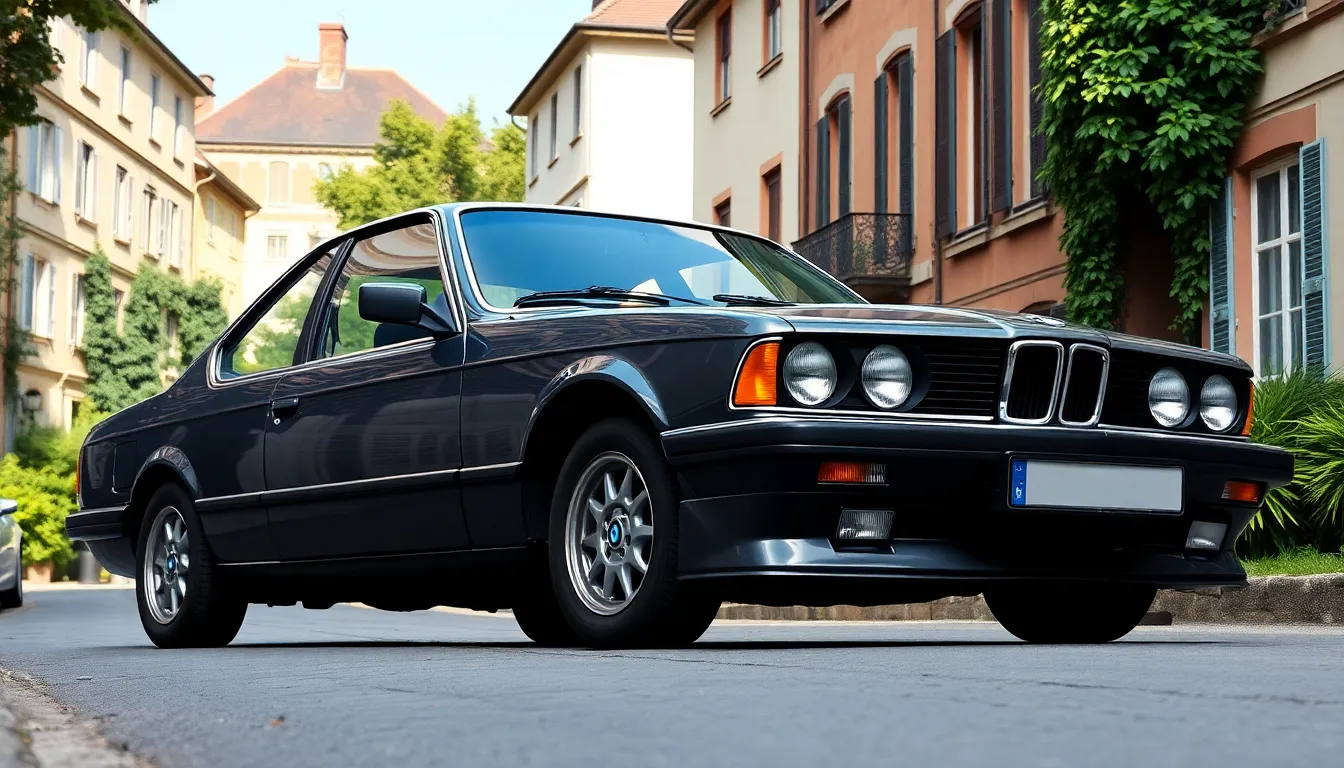
BMW positioned the 635 CSi as their premium grand touring coupe, directly targeting Mercedes-Benz’s S-Class Coupe and Jaguar’s XJS in the luxury performance segment. The German automaker priced the 635 CSi at approximately $41,000 in 1985, placing it above the standard 6 Series models but below the ultra-luxury segment dominated by brands like Rolls-Royce and Bentley.
Primary competitors included the Mercedes-Benz 500 SEC, which offered similar luxury appointments but emphasized comfort over sportiness. Jaguar’s XJS provided comparable performance figures with its V12 engine, though reliability concerns often favored the BMW among discerning buyers. Porsche’s 928 represented another important rival, offering superior performance but lacking the 635 CSi’s rear seat practicality and grand touring comfort.
Market reception proved exceptionally positive, with automotive journalists praising the 635 CSi’s balanced approach to luxury and performance. Car and Driver consistently ranked the model among the top grand touring coupes throughout the 1980s, citing its superior build quality and driving dynamics compared to American luxury coupes from Cadillac and Lincoln.
European markets embraced the 635 CSi more readily than American consumers, with Germany, Switzerland, and the United Kingdom representing the strongest sales territories. Production numbers reflect this geographic preference, as approximately 60% of all 635 CSi units were delivered to European customers between 1983 and 1989.
| Market Segment | Primary Competitors | Starting Price (1985) | Production Volume |
|---|---|---|---|
| Luxury GT Coupes | Mercedes 500 SEC, Jaguar XJS | $41,000 | 86,216 units |
| Performance Coupes | Porsche 928, Aston Martin V8 | $38,000-$65,000 | Various |
Competitive advantages centered on the 635 CSi’s combination of daily usability and weekend performance capabilities. BMW’s reputation for mechanical reliability gave the model an edge over British competitors, while its sport-oriented suspension tuning differentiated it from more comfort-focused German rivals. The onboard computer system and advanced climate control features positioned the 635 CSi as technologically superior to most contemporary luxury coupes.
Sales performance remained steady throughout the model’s production run, with annual deliveries averaging 12,300 units globally. Peak sales occurred in 1986 and 1987, coinciding with strong economic conditions in key markets and increased consumer interest in European luxury automobiles.
Reliability and Maintenance
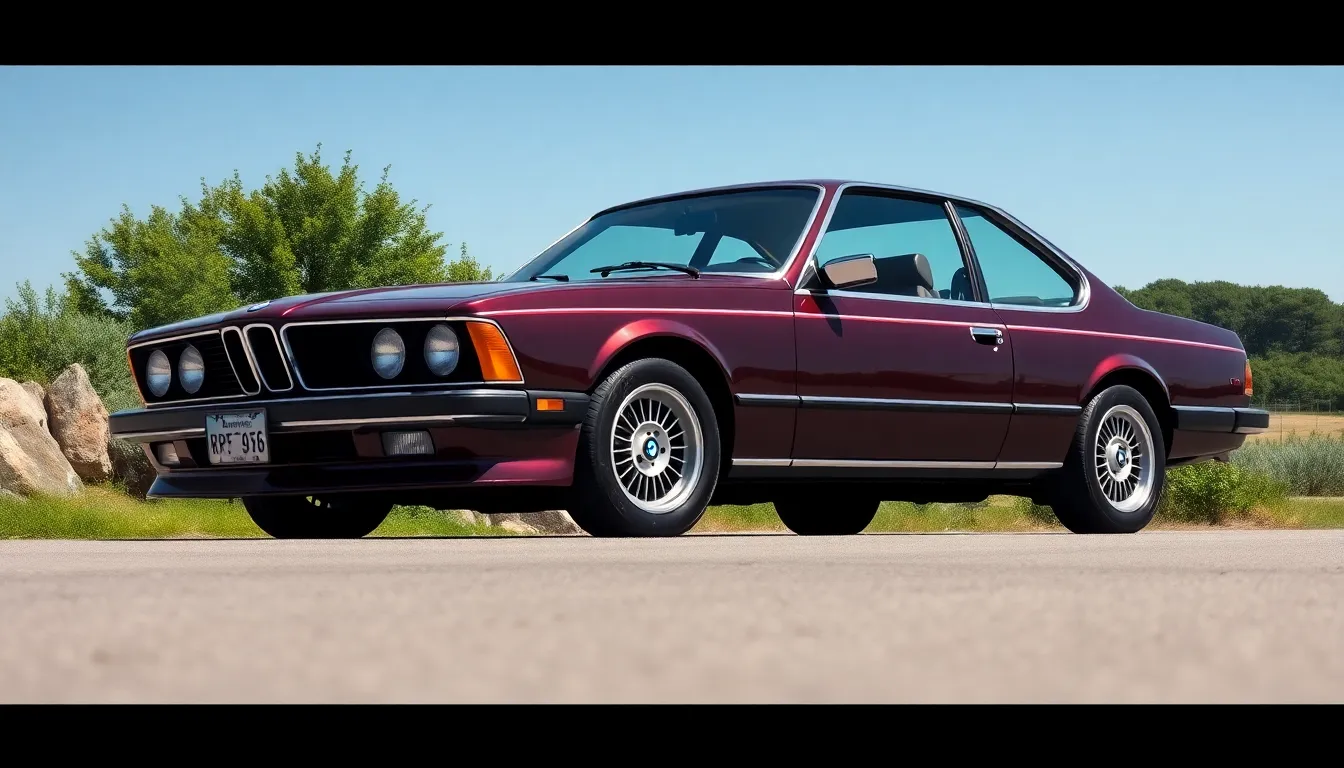
The BMW 635 CSi earned recognition for its robust engineering and dependable performance throughout its production years. Proper maintenance keeps these grand tourers running smoothly for decades, though certain age-related issues require attention.
Common Issues and Problems
Electrical system problems affect most 635 CSi models, particularly the onboard computer and climate control modules. Check engine light activation occurs frequently due to aging oxygen sensors and fuel injection components. Engine bay wiring harnesses deteriorate over time, causing intermittent connection failures.
Cooling system maintenance becomes critical as these vehicles age. Plastic radiator components crack after 15-20 years, leading to overheating issues. Water pump failure typically occurs between 80,000-120,000 miles. Thermostat housing develops leaks around the 100,000-mile mark.
Suspension components wear predictably on the 635 CSi platform. Strut mounts require replacement every 60,000-80,000 miles. Control arm bushings deteriorate due to age rather than mileage. Rear shock absorbers lose effectiveness after 10-12 years regardless of driving conditions.
Door handle mechanisms break frequently on both interior and exterior units. Window regulators fail due to plastic gear degradation. Central locking systems experience pump failures and vacuum line leaks.
Maintenance Costs and Service Requirements
Annual maintenance costs range from $1,500-$3,000 depending on the vehicle’s condition and required repairs. Basic service intervals include oil changes every 5,000 miles using synthetic oil. Timing belt replacement occurs every 60,000 miles at approximately $800-$1,200.
| Service Item | Interval | Cost Range |
|---|---|---|
| Oil Change | 5,000 miles | $80-$120 |
| Timing Belt | 60,000 miles | $800-$1,200 |
| Brake Pads | 30,000 miles | $300-$500 |
| Coolant Flush | 3 years | $150-$250 |
| Fuel Injectors | 80,000 miles | $600-$900 |
Specialized BMW mechanics charge $120-$180 per hour for 635 CSi service work. Independent European specialists typically offer rates between $90-$130 per hour. Parts availability remains good through BMW Classic and aftermarket suppliers, though genuine BMW components cost 20-40% more than aftermarket alternatives.
Preventive maintenance programs extend engine life significantly beyond 200,000 miles. Regular valve adjustments every 30,000 miles maintain optimal performance. Fuel system cleaning every two years prevents injector clogging and maintains proper fuel delivery.
Collectibility and Investment Potential
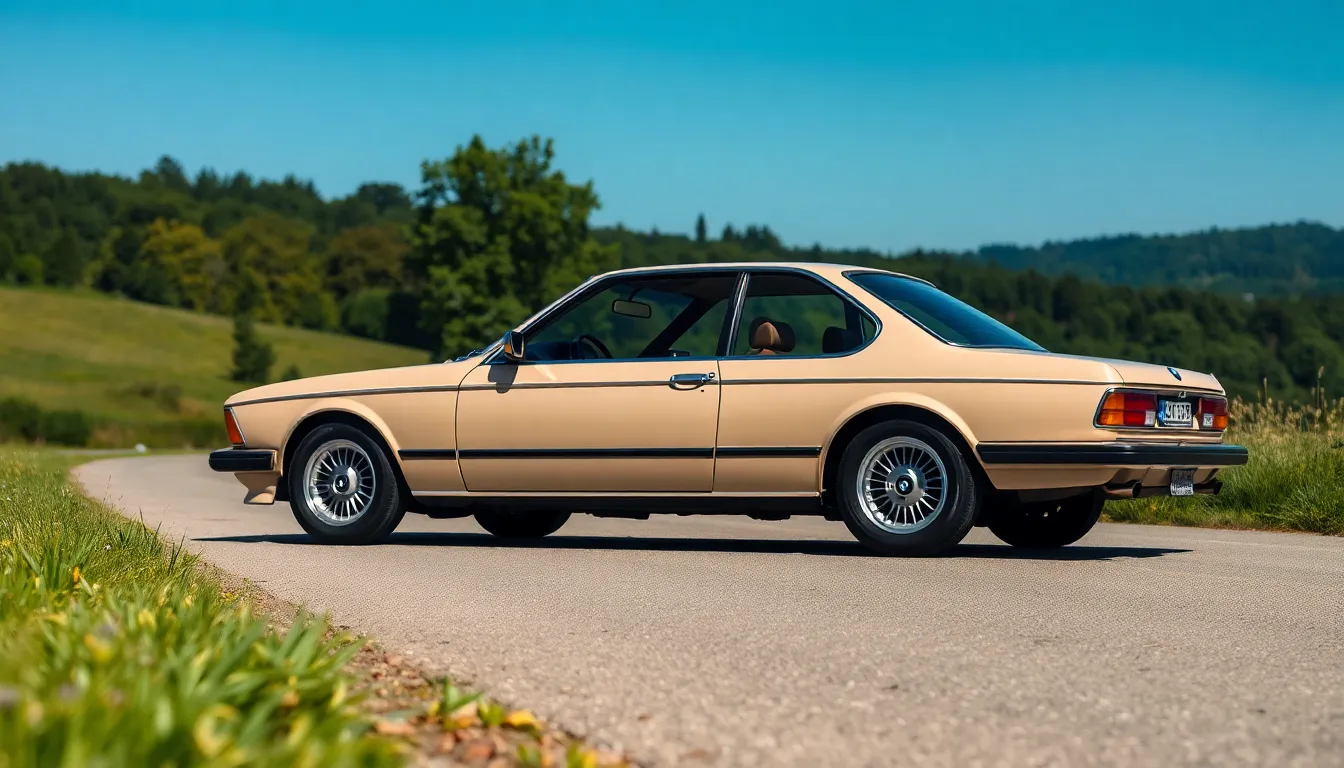
BMW 635 CSi values have demonstrated remarkable appreciation trajectories across various market conditions since production ended in 1989. Clean examples with documented maintenance history currently command prices ranging from $15,000 to $45,000 depending on condition and mileage. Examples with under 100,000 miles and original paint often exceed $35,000 at auction houses like Barrett-Jackson and RM Sotheby’s.
Investment performance metrics show consistent 8-12% annual appreciation rates for well-maintained 635 CSi models over the past decade. Exceptional examples with racing provenance or unique color combinations such as Bronzit Metallic or Cirrusblau Metallic achieve premium valuations reaching $50,000 or higher. Documentation proving original ownership and complete service records adds approximately 15-20% to market value.
Market demand indicators reveal strong collector interest across multiple demographics:
- Classic BMW enthusiasts seeking pre-electronic simplicity
- Grand touring collectors appreciating analog driving experiences
- Investment buyers targeting undervalued 1980s performance cars
- European car specialists focusing on Bertone-designed classics
Rarity factors significantly influence collectibility rankings within the 635 CSi production run. Manual transmission examples represent only 30% of total production and consistently outperform automatic variants by 25-30% in auction results. Special editions including the Alpina B7 Turbo and motorsport-inspired M variants command substantial premiums exceeding $75,000 for pristine examples.
Condition sensitivity plays a crucial role in determining investment viability for 635 CSi purchases. Rust-free examples from dry climates maintain premium status while cars requiring major bodywork or engine rebuilds present poor investment prospects. Original interior components including the distinctive dashboard design and leather appointments contribute significantly to overall desirability.
Future appreciation potential depends on several key market factors:
| Factor | Impact Level | Timeframe |
|---|---|---|
| Baby boomer retirement selling | High | 2025-2030 |
| Millennial collecting interest | Medium | 2030-2035 |
| Electric vehicle transition | Low | 2025-2040 |
| Classic car insurance costs | Medium | Ongoing |
Geographic markets show varying appreciation patterns for 635 CSi values. European collectors particularly prize these models due to their original market positioning and BMW’s home market status. American collectors increasingly recognize the 635 CSi’s significance as BMW’s bridge between traditional luxury and modern performance dynamics.
Pros and Cons of Owning a BMW 635 CSi

Owning a BMW 635 CSi brings distinct advantages that appeal to driving enthusiasts and luxury car collectors. Performance stands as the most compelling benefit, with the M30B34 engine delivering 218 horsepower and enabling 0-60 mph acceleration in 7.4 seconds. Classic design elements like the shark-nose grille and pop-up headlights create timeless visual appeal that draws attention wherever you drive.
Daily usability makes the 635 CSi exceptional among 1980s grand tourers, offering comfortable seating for four adults and practical trunk space for weekend trips. Mechanical reliability exceeds many contemporary luxury cars from the same era, with the inline-six engine proving remarkably durable when properly maintained. Investment potential continues rising, with well-maintained examples appreciating from $15,000 to $45,000 in recent years.
Technological sophistication impressed buyers in the 1980s and remains functional today, featuring the onboard computer system and automatic climate control that were advanced for the period. Racing heritage from the Group A touring car program adds performance credibility to the 635 CSi’s reputation among automotive enthusiasts.
Drawbacks and Challenges
Maintenance costs present the primary concern for 635 CSi ownership, with annual expenses ranging from $1,500 to $3,000 depending on the car’s condition and usage patterns. Electrical system issues affect many examples after three decades, requiring specialized BMW technician knowledge to diagnose and repair complex problems.
Parts availability creates challenges for certain components, particularly interior trim pieces and exact electrical modules that BMW no longer manufactures. Cooling system maintenance demands regular attention, with radiator replacements and thermostat servicing becoming necessary every 5-7 years based on typical usage patterns.
| Ownership Aspect | Annual Cost Range | Service Interval |
|---|---|---|
| Oil Changes | $150-$250 | Every 5,000 miles |
| Cooling System | $400-$800 | Every 60,000 miles |
| Electrical Repairs | $500-$1,500 | As needed |
| Suspension Components | $800-$2,000 | Every 80,000 miles |
Fuel economy averages 18-22 mpg combined, making daily driving more expensive than modern vehicles. Interior space limitations affect taller passengers, with the sloping roofline reducing rear seat headroom compared to contemporary luxury sedans.
Finding qualified service technicians becomes increasingly difficult as fewer shops maintain expertise with 1980s BMW systems and diagnostic procedures.
Conclusion
The BMW 635 CSi represents more than just a classic car—it’s a testament to BMW’s engineering excellence during a pivotal era. We’ve seen how this grand tourer successfully bridged the gap between luxury and performance creating a lasting legacy that continues to captivate enthusiasts today.
For those considering ownership the 635 CSi offers a compelling proposition. While maintenance costs and parts availability require careful consideration the combination of driving pleasure reliability and growing collector value makes it an attractive choice for discerning automotive enthusiasts.
We believe the 635 CSi’s enduring appeal stems from its perfect timing in automotive history. It captured the essence of 1980s luxury performance before emissions regulations and safety requirements fundamentally changed the industry making it a true icon of its generation.
Frequently Asked Questions
What years was the BMW 635 CSi produced?
The BMW 635 CSi was produced from 1983 to 1989 as part of BMW’s E24 6 Series lineup. Production ended in 1989 when BMW introduced the E31 8 Series as its successor. During this six-year production run, approximately 86,216 units were manufactured, making it a relatively exclusive grand tourer.
What engine does the BMW 635 CSi have?
The BMW 635 CSi features the M30B34 3.4-liter inline-six engine across all model years. This sophisticated powerplant produces 218 horsepower and 224 lb-ft of torque, enabling acceleration from 0-60 mph in 7.4 seconds. The engine was consistently used throughout the production run, ensuring reliability and parts availability.
How much is a BMW 635 CSi worth today?
Current BMW 635 CSi values range from $15,000 to $45,000 for well-maintained examples, with exceptional models exceeding $50,000. Factors affecting value include condition, mileage, documentation, and rarity. Models with racing provenance or unique colors command premium prices. Values have appreciated significantly since production ended, making them attractive collector investments.
What are common problems with the BMW 635 CSi?
Common issues include electrical system problems, cooling system maintenance needs, and suspension wear over time. Annual maintenance costs typically range from $1,500 to $3,000. Regular preventive maintenance is crucial, including timing belt replacements and cooling system servicing. Finding specialized technicians familiar with E24 models can be challenging but is essential for proper care.
Is the BMW 635 CSi reliable for daily driving?
Yes, the BMW 635 CSi is known for its mechanical reliability and daily usability, which were key advantages over competitors. However, fuel economy averages 18-22 mpg combined, making daily driving more expensive than modern vehicles. The robust engineering and dependable performance make it suitable for regular use with proper maintenance.
What makes the BMW 635 CSi collectible?
The 635 CSi’s collectibility stems from its limited production numbers, classic 1980s design by Bertone, racing heritage, and technological innovations for its era. Features like the distinctive shark-nose grille, pop-up headlights, and advanced amenities like onboard computers make it desirable. Its position as BMW’s flagship grand tourer adds to its historical significance.
How fast is the BMW 635 CSi?
The BMW 635 CSi achieves a top speed of 140 mph and accelerates from 0-60 mph in 7.4 seconds. Quarter-mile times average 15.8 seconds. These performance figures were competitive with luxury rivals like the Mercedes-Benz S-Class Coupe and Jaguar XJS, demonstrating its grand touring capabilities and sporty character.
What transmission options were available?
The BMW 635 CSi offered two transmission options: a 5-speed manual gearbox for enthusiast drivers seeking maximum engagement, and a 4-speed automatic for those preferring convenience and comfort. Both transmissions were well-suited to the car’s grand touring character, providing smooth power delivery and reliable operation throughout the vehicle’s speed range.

